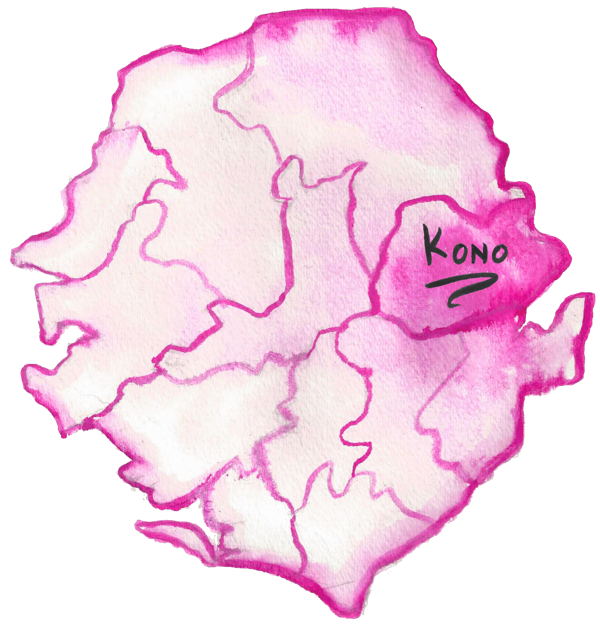Where We Work
Sierra Leone is a country the size of South Carolina with a population of around 6 million on the coast of West Africa. It is tropical, mountainous, and rich in minerals – diamonds, gold, titanium, and others. Sierra Leoneans are of many tribes – Kono, Mende, Temne, Limba, Mandinko, and others – and most people are Christian or Muslim. The country gained its independence from Britain in 1961 after around 150 years of colonial rule. Sierra Leone’s ten-year civil war, which ended in 2002, displaced millions of people and destroyed much of the country’s infrastructure. SOSL’s two schools are in Bongema, a village close to Koidu, the capital of Kono District. Kono is a diamond-rich district in the Eastern region of Sierra Leone. Because of its mineral wealth, the region suffered devastation during the war – its population was reduced from 600,000 to about 450,000 today. The mines still operate and employ many people in the area, but the region remains devastatingly poor and neglected. Koidu is about 275 miles from the capital city, Freetown, but only half of the road is paved and the journey takes up to ten hours by vehicle.


Today, in Sierra Leone, the average individual over the age of 25 has received less than three years of schooling. The typical junior high school classroom is filled with approximately 54 students and, as a result of extreme overcrowding, may implement a “shift system,” educating children in two rotations with each group receiving instruction for only one-half of the day. Between Sierra Leone’s civil war and the recent Ebola outbreak, the country now confronts an immense shortage of teachers. The Sierra Leonean government will need to increase capacity by 54% to achieve the goal of universal primary school education in the country.

